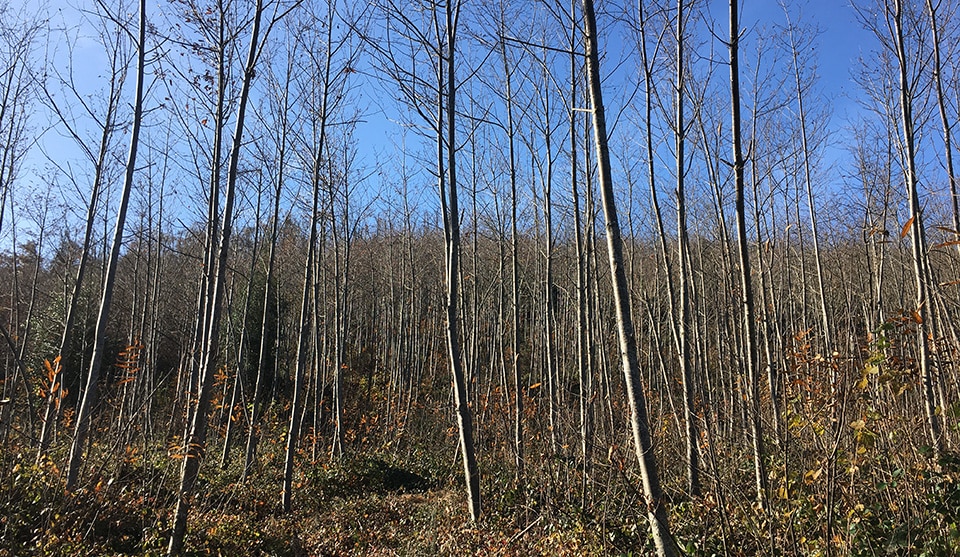Native species
It has always been thought that the sweet chestnut tree was introduced to the Iberian Peninsula by the Romans. However, although they were responsible for its wide spread (due to its fruit and the versatility of use of its wood), scientific research has revealed that this species was already part of the flora at that time.
Wherever the sweet chestnut tree grows, its wood has been widely used for a wide variety of purposes: construction (pontoons and beams), interior and exterior joinery, barrels, boats, posts and granaries. Baskets are made from the finest sticks of this tree. It has always been highly valued for furniture making, fine veneer or general joinery.

Characteristics and properties
The sweet chestnut tree is a corpulent tree, capable of reaching a height of up to 35m, and is long-lived (there are specimens that are more than 1,000 years old).
In sweet chestnut wood, the sapwood is clearly differentiated, very thin (2-4 rings) and yellowish-white in colour. The heartwood has a light shade, which with the passing of time takes on an old gold tone. The growth rings are well differentiated, so it has a marked texture and in the tangential cuts they exhibit a showy flaming.
The fibre is straight with slight undulations, and the grain is medium to coarse. It has a medium hardness, is elastic/flexible, tenacious and easy to work: good machining, nailing, screwing and polishing. It has an average density of 560-600 kg/m3 at 12% moisture content. It accepts well and enhances any finish such as stain, varnish or oil. It is a low-strung wood with great dimensional stability, with a noble behaviour in the face of changes in humidity and temperature. In addition, thanks to its richness in tannins, sweet chestnut has a high natural durability.